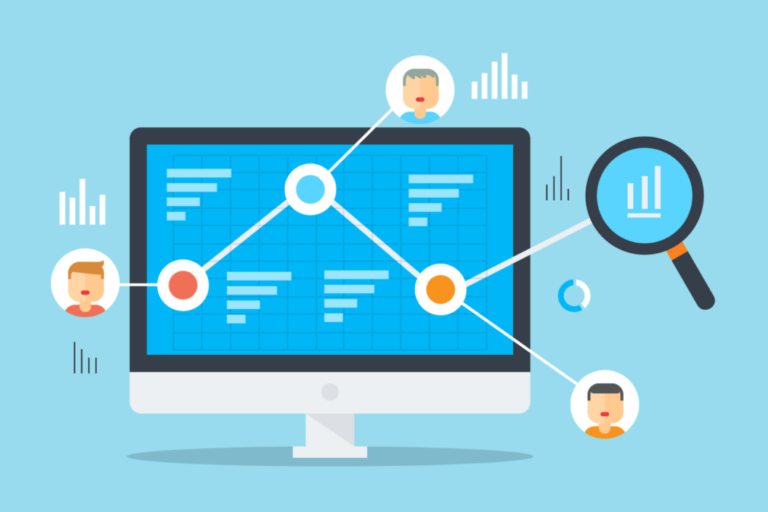
Table of Contents
Introduction
In today’s digital landscape, data has become the cornerstone of successful marketing strategies. Data-driven marketing involves the use of data to inform and optimize marketing decisions, allowing businesses to target their audiences more effectively and achieve higher returns on investment (ROI). This blog post will explore the essential data-driven marketing strategies that can elevate your marketing efforts and deliver measurable results.
Understanding Data-Driven Marketing
Data-driven marketing leverages data collected from various sources to make informed marketing decisions. This approach helps marketers understand customer behaviors, preferences, and trends, enabling them to create more targeted and effective campaigns.
Benefits of Data-Driven Marketing:
- Enhanced Targeting and Personalization: By analyzing customer data, marketers can create highly targeted campaigns that resonate with specific audience segments.
- Improved Decision-Making: Data provides insights that guide marketing strategies, helping businesses make informed decisions and allocate resources efficiently.
- Increased ROI: Data-driven marketing optimizes campaigns for better performance, leading to higher ROI and more efficient use of marketing budgets.
Key Data-Driven Marketing Strategies
1. Customer Segmentation and Targeting Customer segmentation involves dividing a broad customer base into smaller groups based on shared characteristics. This strategy allows marketers to tailor their messages and offers to meet the specific needs of each segment.
- Techniques for Effective Segmentation: Use demographic, psychographic, and behavioral data to create detailed customer profiles. Employ tools like CRM systems and analytics platforms to segment your audience accurately.
- Tools and Technologies: Leverage software such as HubSpot, Salesforce, and Google Analytics to gather and analyze customer data for segmentation.
2. Personalization and Customer Experience Personalized marketing delivers customized content and experiences to individual customers based on their preferences and behaviors. This approach enhances customer satisfaction and loyalty.
- Methods to Personalize Marketing Efforts: Utilize data from customer interactions, purchase history, and browsing behavior to create personalized email campaigns, product recommendations, and website experiences.
- Case Studies of Successful Personalization: Companies like Amazon and Netflix excel in personalized marketing by recommending products and content based on user behavior, leading to increased engagement and sales.
3. Predictive Analytics and Forecasting Predictive analytics uses historical data and machine learning algorithms to predict future outcomes. In marketing, it helps forecast customer behavior, market trends, and campaign performance.
- Techniques and Tools: Implement predictive models using tools like IBM Watson, SAS, and Microsoft Azure. Analyze patterns in customer data to predict future actions and optimize marketing strategies accordingly.
- Examples of Predictive Analytics in Action: Retailers use predictive analytics to forecast demand for products, optimize inventory levels, and tailor marketing messages to anticipated customer needs.
4. Content Optimization and A/B Testing Content optimization ensures that your marketing content is engaging, relevant, and effective. A/B testing involves comparing two versions of a marketing asset to determine which performs better.
- How to Use Data to Optimize Content: Analyze metrics like click-through rates, conversion rates, and engagement levels to identify high-performing content. Use insights to refine and improve future content.
- A/B Testing Strategies and Best Practices: Test different headlines, images, and calls-to-action. Use tools like Optimizely and Google Optimize to conduct A/B tests and gather data on performance.
5. Customer Journey Mapping and Analysis Customer journey mapping visualizes the steps customers take from initial awareness to purchase and beyond. Analyzing these journeys helps marketers understand pain points and opportunities for engagement.
- Tools for Mapping and Analyzing Customer Journeys: Use tools like Lucidchart, Smaply, and Adobe Experience Cloud to create detailed customer journey maps. Analyze touchpoints to identify areas for improvement.
- Impact on Marketing Strategies: By understanding the customer journey, marketers can create more effective campaigns that guide customers smoothly through the buying process.
6. Social Media Analytics Social media analytics involves collecting and analyzing data from social media platforms to inform marketing strategies. This data provides insights into customer sentiment, engagement, and brand perception.
- Tools and Techniques for Social Media Analysis: Utilize tools like Hootsuite, Sprout Social, and Brandwatch to monitor social media activity and gather valuable insights.
- How to Use Social Media Insights in Marketing: Analyze trends and sentiments to adjust your messaging, identify influencers, and measure the effectiveness of social media campaigns.
7. Marketing Automation Marketing automation uses technology to streamline and automate marketing tasks, improving efficiency and effectiveness.
- Benefits of Marketing Automation: Automate repetitive tasks like email marketing, social media posting, and lead nurturing. Focus on strategic activities while ensuring consistent and personalized communication with customers.
- Key Automation Tools: Employ tools like Mailchimp, Marketo, and Pardot to automate your marketing processes and gather data on campaign performance.
- Examples of Effective Marketing Automation: Companies use automation to send personalized emails based on customer behavior, segment leads, and track campaign results in real-time.
Implementing Data-Driven Marketing Strategies
To successfully implement data-driven marketing strategies, follow these steps:
- Assess Your Current Data Capabilities: Evaluate the data you currently collect and identify gaps. Ensure you have the right tools and technologies in place to gather and analyze data effectively.
- Set Clear Goals and Objectives: Define what you want to achieve with your data-driven marketing efforts, such as increasing conversions, improving customer engagement, or enhancing brand loyalty.
- Develop a Data-Driven Culture: Encourage a data-centric mindset within your organization. Train your team to use data effectively and make decisions based on insights.
- Address Challenges: Overcome common challenges like data silos, data quality issues, and privacy concerns by implementing robust data management practices and ensuring compliance with regulations.
- Measure and Optimize: Continuously monitor your marketing performance using data. Use insights to refine your strategies and improve results over time.
Conclusion
Data-driven marketing strategies are essential for businesses looking to stay competitive in today’s digital landscape. By leveraging data to inform your marketing decisions, you can achieve better targeting, personalization, and overall performance.
For further advice on implementing effective data-driven marketing strategies, feel free to contact me through my contact page, via WhatsApp, or order my Gig on Fiverr.



